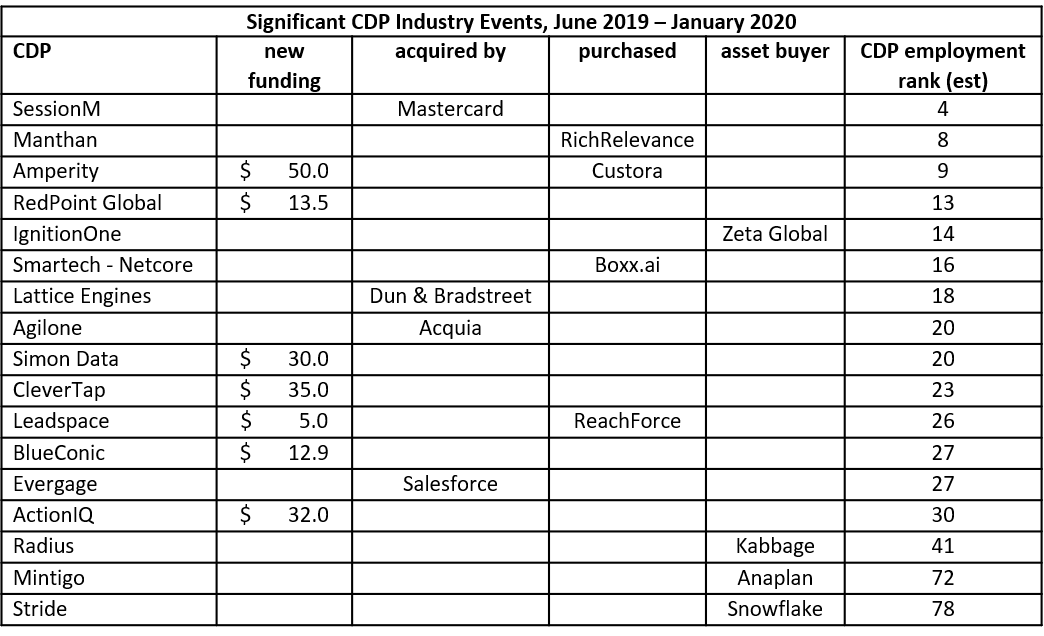
SWARTHMORE, PA, U.S.A., 11-Feb-2020 — /EuropaWire/ — Established Customer Data Platform vendors prepared for industry consolidation even as new firms entered industry during the second half of 2019, according to the CDP Institute’s semi-annual Industry Update. The industry added fourteen vendors and $236 million in new capital during the period while employment was up 64% over the previous year.
The CDP Institute estimates industry revenue for the 2019 at $1 billion and expects at least $1.3 billion in 2020. Growth will be driven by expansion outside the U.S. and entry of enterprise marketing vendors. Adobe, Microsoft, and Oracle all released RealCDPTM-compliant products during the period and Salesforce is expected to release one in mid-2020. RealCDP is the CDP Institute’s standard for capabilities required to provide expected CDP functions.
The dominant theme of the period was change. The period saw three acquisitions of CDP vendors by larger firms, four acquisitions of other firms by CDP vendors, seven major funding events, and the exits of nine firms through asset sales or repositioning. The trend continued in early 2020 with Salesforce’s February 3 acquisition of CDP Evergage. These developments show vendors positioning themselves to succeed in a crowded marketplace where no company has yet established a dominant position. The transactions were notably concentrated in the second tier of CDP vendors: eleven of the fourteen non-exit events involved firms ranking between 13th and 30th in the 101-company industry.

Vendor Categories
The CDP Institute assigns CDP vendors to four categories based on the functions provided by their systems. Categories are:
- These systems gather customer data from source systems, link data to customer identities, and store the results in a persistent database available to external systems. This is the minimum set of functions required to meet the definition of a CDP.
- Analytics. These systems provide data assembly plus analytical applications. The applications always include customer segmentation and sometimes extend to machine learning, predictive modeling, revenue attribution, and journey mapping. These systems often automate the distribution of segment lists to marketing automation or advanced analytics products.
- Campaigns. These systems provide data assembly, analytics, and customer treatments. These treatments may be personalized messages, real time interactions, product or content recommendations, outbound marketing campaigns, customer journey orchestration, or other contacts. What distinguishes them from segmentation is they also specify the message to be delivered.
- These systems provide data assembly, analytics, customer treatments, and message delivery. Delivery is typically through email, Web site, CRM, or several of these. Products in this category often started as delivery systems and added CDP functions later.
A free copy of the complete report is available at https://lp.cdpinstitute.venntive.com/DL2129-CDPI-Industry-Update-January-2020
